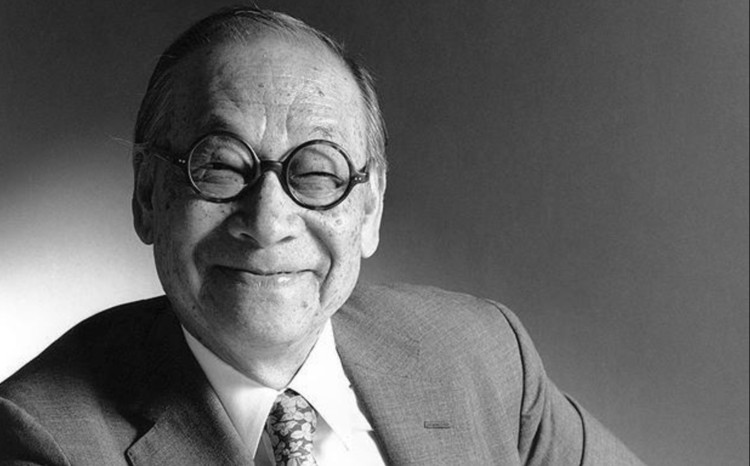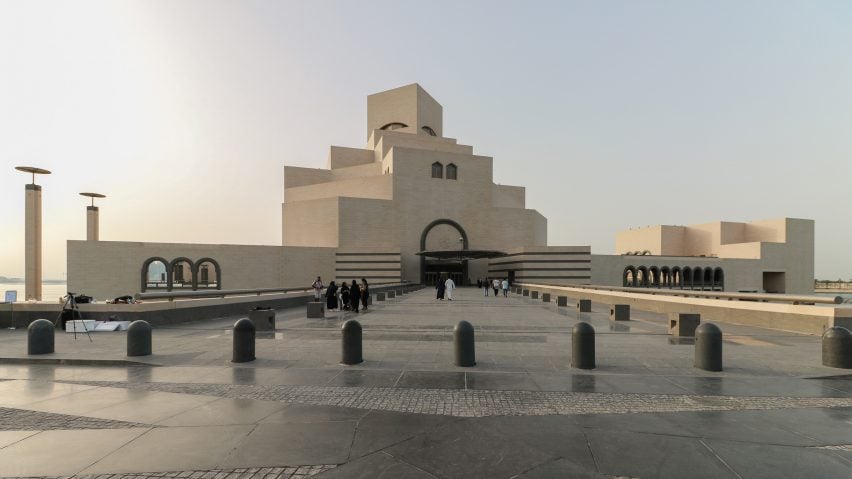Hello Everyone:
It is a lovely Tuesday afternoon and Day two of #TrumpVisitUK and still no milkshake in sight. Although Baby Trump made his debut. The 75th D-Day Commemoration Ceremony is coming and who knows what could happen. Moving on.
 |
| I.M. Pei archdaily.com |
On May 16, 2019, architect Ieoh Ming Pei passed away at the age of 102 years-old. That fact alone is quite remarkable but not really when you stop and think how prolific his career was. However, the real genius of I.M. Pei's career was how understated his modernism was. Unlike more heroic architectural contemporaries: Philip Johnson, Frank Gehry, and the late Zaha Hadid, I.M. Pei's modernism was elegant in their geometry and the way they appeared to dissolve into the sky. They were also some of the most infuriating structures because they were not that well engineered. American writer John Updike made reference to the architect's most famous skyscraper in his 1980 story Gesturing.
| 200 Clarendon (John Hancock Tower, 1976) Boston, Massachusetts chicagotribune.com |
In the story, the newly separated Richard Maple finds himself staring out of his Boston apartment with a view of amazing skyscraper. John Updike described it,
The skyscraper, for years suspended in a famous state of incompletion, was a beautiful disaster,..., famous because it was a disaster (glass kept falling from it) and disastrous because it was beautiful...(newyorker.com; May 28, 2019; date accessed June 4, 2019).
I.M. Pei imagined that sheer glass glass cladding would,
...reflect the sky and the old low brick skyline of Boston "and would " melt into the sky. Instead,..., the windows of mirroring glass kept falling to the street and were replace by ugly opacities of black plywood (Ibid).
Nevertheless, a sufficient amount of the reflective surface remained
to give an impression, through the wavery old window of this sudden apartment, of huge blueness, a of the sea that Richard awoke to each morning, in the now bone-deep morning chill of his unheated shack (Ibid).
Emblematic of Richard Maple's slowly dissolving soul.
| Close up of the John Hancock Tower en.wikipedia.org |
The John Hancock Tower was designed by Henry N. Cobb of the I.M. Pei and completed in 1976. The Hancock, as it is commonly known, is the fulfillment of every Modernist's dream: Pure glass architecture (Ibid). Like the fictitious skyscraper of John Updike's story, it too suffered from engineering failures. The glass panes could not withstand Boston's high winds. A further study concluded that the skyscraper had deeper structural integrity issues and could, under heavy winds, collapse. Fortunately, vigilant attention and repair have kept the building in good shape and allow it to remain, according to Nikil Saval, "the single most beautiful object in one of the world's most tedious, stuffy cities--on one of Boston's handful of pleasant blue days, it reflects and multiplies the scudding clouds" (Ibid).
I.M. Pei was born in China on April 26, 1917 and passed away in New York. For over half a century, I.M. Pei received major commissions around the world and the United States, that have become integral to the character of our cities. Although it was not always obvious how his work harmoniously worked with their host cities. He was a modernist, who unlike his headline making contemporaries, designed the kind of buildings that were more modest in character. The John Hancock Tower was one such building, you knew it but did not go out of your way to see it.
 |
| Louvre Pyramid, 1989 Paris, France architectmagazine.com |
The Louvre Pyramid, another one of I.M. Pei's best known works, was controversial when it was completed. Critics argued that it was completely out character with the stately museum. It still does stick out like spike rising out of the courtyard but it has become a landmark. Mr. Saval describes, "Glowing and light-filled, the pyramid is the paradoxical iconic work that has become inextricable from its surroundings; it is now impossible to imagine the museum's fronting plaza without it" (Ibid).
In short, I.M. Pei followed through the tradition of architectural modernism more thoroughly than other architects. As a student at the Massachusetts Institute of Technology, he was inspired by Le Corbusier but resisted the Swiss-French architect's megalomaniac aspirations. Instead, he was more of the professional, the kind that made "modernism feel conservative and traditional" (Ibid).
 |
| East Wing of the National Gallery of Art, 1978 Washington D.C. nga.gov |
The East Wing of the National Gallery of Art in Washington D.C. is good example of this approach. The East Wing brings together "sharp, trapezoidal construction with monumental marble veneer" (Ibid). This was a modern project that seamlessly integrated itself into the academic neo-classical design of the U.S. capital city. "Emblematic of a figure who put up buildings everywhere that one doesn't know are his while at the same time, becoming a figure of significant international renown,..." (Ibid). What was truly amazing was that I.M. Pei, who won every major prize and recognition available in the profession, was an Asian American practicing in a field that is notoriously hostile to women and people of color. He told critic Paul Goldberger,
I worry that ideas and professional practice doe not intersect enough,.... Maybe my early training set me back. Maybe it made me too much of a pragmatist (Ibid)
 |
| Museum of Islamic Art, 2017 Doha, Qatar dezeen.com |
One byproduct of I.M. Pei's remarkably long career was that in one sense he captured the entire drift of the modern movement. He worked throughout the postwar years into the first two decades of this millennium and was party to its achievements and disasters. One of the elements that make I.M. Pei's iconic is the way they transition from the street. If you turn your attention to the image of the left, the Museum of Islamic Art, what you see is this expanse of concrete leading up to the museum. The concrete expanse serves as the transition from the bustling streets to the more serene rarefied museum environment. In a way, it references the Islamic gardens that create a contemplative space. In this way, the Museum of Islamic Art becomes a creature of its place rather than negating like more heroic projects tend to do.
Modern, yet classical. Attention getting, yet modest. The master I.M. Pei
No comments:
Post a Comment